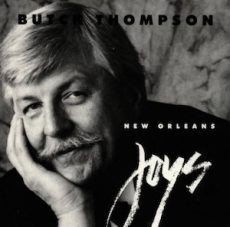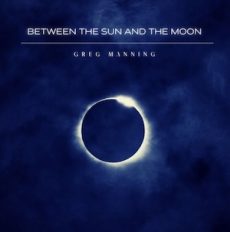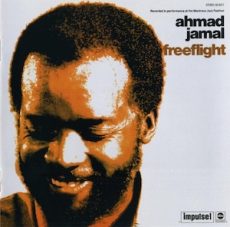
Daily Dose Of Jazz…
Bhumibol Adulyadej was born on December 5, 1927 in Cambridge, Massachusetts, however, the family moved to Bangkok, Thailand where she briefly attended Mater Dei school. In 1933 his mother took the family to Switzerland, where he continued his education at the École nouvelle de la Suisse romande in Lausanne. In 1934 he was given his first camera, which ignited his lifelong enthusiasm for photography.
Before he became King of Thailand, titled Rama IX, in 1942, Bhumibol became a jazz enthusiast, and started to play the saxophone, a passion that he kept throughout his life. He received his high-school diploma with a major in French literature, Latin, and Greek from the Gymnase Classique Cantonal de Lausanne, and by 1945 had begun studying sciences at the University of Lausanne, when World War II ended and the family was able to return to Thailand.
Adulyadej became an accomplished jazz baritone saxophone player and composer, playing Dixieland and New Orleans jazz. He also played the clarinet, trumpet, guitar, and piano. It is widely believed that his father may have inspired his passion for artistic pursuits at an early age. Initially focusing on classical music exclusively for two years but eventually switched to jazz since it allowed him to improvise more freely. It was during this time that he decided to specialize in wind instruments, especially the saxophone and clarinet. By 18 he started composing his own music with the first being Candlelight Blues.
He continued to compose even during his reign following his coronation in 1946. Bhumibol performed with Preservation Hall Jazz Band, Benny Goodman, Stan Getz, Lionel Hampton, and Benny Carter. Throughout his life, Bhumibol wrote a total of 49 compositions, much of it is jazz swing but he also composed marches, waltzes, and Thai patriotic songs.
He initially received general music training privately while he was studying in Switzerland, but his older brother, then King Ananda Mahidol, who had bought a saxophone, sent Bhumibol in his place. King Ananda would later join him on the clarinet. On his permanent return to Thailand in 1950, he started a jazz band, Lay Kram, whom he performed with on a radio station he started at his palace. The band grew, being renamed the Au Sau Wan Suk Band and he performed with them live on Friday evenings, occasionally taking telephoned requests.
Many bands such as Les Brown and His Band of Renown, Claude Bolling Big Band, and Preservation Hall Jazz Band recorded some of his compositions and can still be heard in Thailand. A 1996 documentary, Gitarajan, was made about his music. Adulyadej still played music with his Au Sau Wan Suk Band in later years, but was rarely heard in public. In 1964, Bhumibol became the 23rd person to receive the Certificate of Bestowal of Honorary Membership on behalf of Vienna’s University of Music and Performing Arts.
Baritone saxophonist, clarinetist, trumpeter, guitarist, pianist and composer and King Bhumibol Adulyadej, who reigned for 70 years and 126 days and is the longest of any Thai monarch, died on October 13, 2016 in Bangkok, Thailand.
More Posts: bandleader,clarinet,composer,guitar,history,instrumental,jazz,music,piano,saxophone,trumpet

EMMET COHEN TRIO
Multifaceted American jazz pianist and composer Emmet Cohen is one of his generation’s pivotal figures in music and the related arts. Leader of the trio and creator of the Masters Legacy Series, he is an internationally acclaimed jazz artist, a dedicated educator, the winner of the 2019 American Pianists Awards, and a finalist in the 2011 Thelonious Monk International Piano Competition.
He headlines regularly at Jazz at Lincoln Center, the Village Vanguard, and Birdland, and has appeared at the Newport, Monterey, and North Sea jazz festivals. His artistry has taken him to venues and festivals in over 30 countries. Cohen’s entrepreneurial energies led to his developing “Live From Emmet’s Place,” a live-streamed “Harlem rent party” that unites a worldwide audience via tens of millions of internet views. Cohen has released over ten albums as leader and has performed or recorded with Ron Carter, Benny Golson, Jimmy Cobb, George Coleman, Jimmy Heath, Tootie Heath, Houston Person, Christian McBride, and Kurt Elling.
The Band: Emmet Cohen ~ piano, Yasushi Nakamura ~ bass and Joe Farnsworth ~ drums
Tickets: $45.76 ~ $56.06 | Friday & Saturday 8:30 Shows: Sold Out
More Posts: adventure,bandleader,club,genius,instrumental,jazz,music,piano,preserving,travel

Daily Dose Of Jazz…
Richard Enos “Butch” Thompson was born on November 28, 1943 in St. Croix, Minnesota, began playing piano at the early age of three, and began taking lessons at age six. At Stillwater Area High School, he played clarinet in the band and in 1962 he joined the Hall Brothers New Orleans Jazz Band in Minneapolis, Minnesota and remained with them for twenty years.
>From 1974 to 1986, he was a regular and the original pianist on the radio show A Prairie Home Companion. From its inception in the 1960s he led the Butch Thompson Trio.
The 1970s saw Thompson’s recordings gaining popularity in Europe and he toured the continent extensively during the decade and into the 1980s, both as a solo artist and as a band leader or member.
He wrote for jazz publications and produced a radio show, Jazz Originals, for KBEM-FM in Minneapolis. Pianist and clarinetist Butch Thompson, best known for his ragtime and stride performances, died on August 14, 2022.
More Posts: bandleader,clarinet,history,instrumental,jazz,music,piano

Daily Dose Of Jazz…
Greg Manning was born on November 24, 1965 in Nigeria and raised in Zurich, Switzerland. While growing up he was mostly exposed to jazz by his parents. Yet, he discovered his deep love for music only after hearing Stevie Wonder’s Isn’t She Lovely. He started playing the piano at twelve and several years later moved to the United States to study piano and film scoring at Berklee College of Music in Boston, Massachusetts.
His big break came when asked to compose the music for Keep Cool, the most successful and longest running German musical. The musical led Manning back to Zurich where he continued to compose and produce for records and television.
Moving to Los Angeles, Calidornia in 2002 where his career took off. The three-time platinum producer for Universal Music Switzerland, and has had several Swiss Chart toppers since 1996. The former keyboardist and music director for Grammy Award-nominated artist Jonathan Butler, he has been the keyboardist for Mindi Abair, Gerald Albright, Will Downing, Richard Elliot, Brian McKnight, Chante Moore, and Kirk Whalum, among others.
Touring extensively for ten years throughout the U.S., Europe, South Africa, and the U.K., Greg made a conscious decision to come off the road. Not long thereafter, he started composing music for film and television. As an artist, his own music is the union of jazz, soul, and funk.
Pianist, composer Greg Manning, who operates in the soul jazz and smooth genres has never stopped composing and continues to record and perform.
More Posts: bandleader,composer,history,instrumental,jazz,music,piano

Requisites
Over the past fifty years, I’ve found immense joy in listening to Ahmad Jamal’s work across his extensive catalog, including releases on Argo, Cadet, and later Impulse Records. Each time I was fortunate enough to experience his trio live in Atlanta, their performance was absolutely electrifying. Jamal and his group consistently delivered music that was both profoundly moving and impeccably polished. Today’s featured album from my collection is Freeflight (Impulse! – ABC Records AS-9217), which showcases the trio’s live set at the Montreux Jazz Festival. On this recording, Ahmad Jamal plays both the Fender Rhodes electric piano and acoustic piano, joined by Jamil Nasser on bass and Frank Gant on drums. My personal copy is the 1973 U.S. stereo reissue, which retains the original catalog number.
The set opens with a warm welcome to the musicians, setting the stage for the trio’s spirited rendition of Effendi, by McCoy Tyner. The trio dives straight into the brisk tempo, with Ahmad igniting an energetic solo on the electric piano. There’s a brief exchange between Jamil’s bass and Ahmad’s acoustic piano before Jamal returns to the electric keys. Frank contributes a concise, lively reading, and Jamil finishes with an exhilarating finale, driving the tune to a thrilling close, earning an enthusiastic response from the audience. The tempo eases as Jamal introduces Dolphin Dance by Herbie Hancock on the acoustic piano, segueing into the group's melody. Jamal’s deeply expressive playing doesn’t disappoint, leading to a vibrant conclusion and audience applause.
Side Two begins with Ahmad and Jamil engaging in a musical conversation, leading into the pianist’s Manhattan Reflections. Jamal returns to the electric piano for a buoyant mid-tempo melody, then takes off first with a spirited opening statement that captures the energy of both instruments. The piano and bass then share the spotlight briefly to revisit the theme before the trio’s closing chorus ends gently. Ahmad returns to the acoustic piano to conclude the set with his signature tune, Poinciana by Nat Simon and Buddy Bernier. A solo introduction from Jamal leads into the ensemble’s mid-tempo theme. As the only soloist, Jamal tells a captivating story with Nasser and Gang’s support until the trio reunites to conclude the song, greeted by the audience’s enthusiastic applause!
The production of Freeflight was a collaborative effort between Ahmad Jamal and Ed Michel, while Carlos Olms and Stephan Sulke handled the recording of the live performance. Overall, the recording quality is commendable, though there’s one significant flaw: the microphone was positioned too close to Jamal’s electric piano during Effendi, resulting in noticeable harshness and overmodulation. However, please don’t let that minor drawback deter you from seeking out Freeflight by Ahmad Jamal when browsing for records on your next shopping trip. Although not as well- known as his earlier live release, At The Top: Poinciana Revisited, this album still deserves consideration for your library. Even after more than five decades, the album delivers outstanding piano trio music and is highly Recommended!
~ At The Top: Poinciana Revisited (Impulse! – ABC Records AS-9176) – Source: Discogs.com
~ Poinciana – Source: Wikipedia.org
© 2025 by Edward Thomas Carter
More Posts: choice,classic,collectible,collector,history,instrumental,jazz,music,piano




